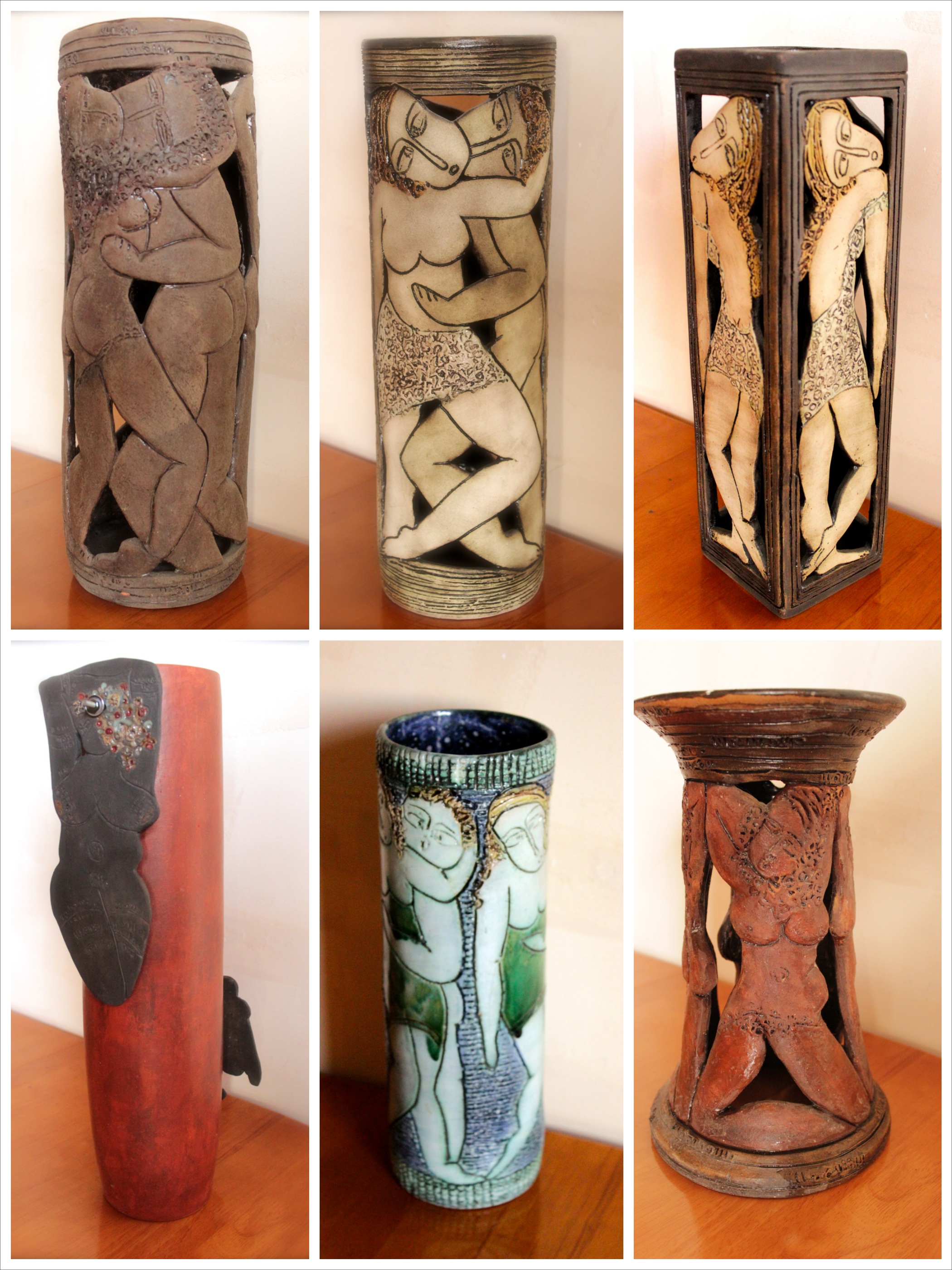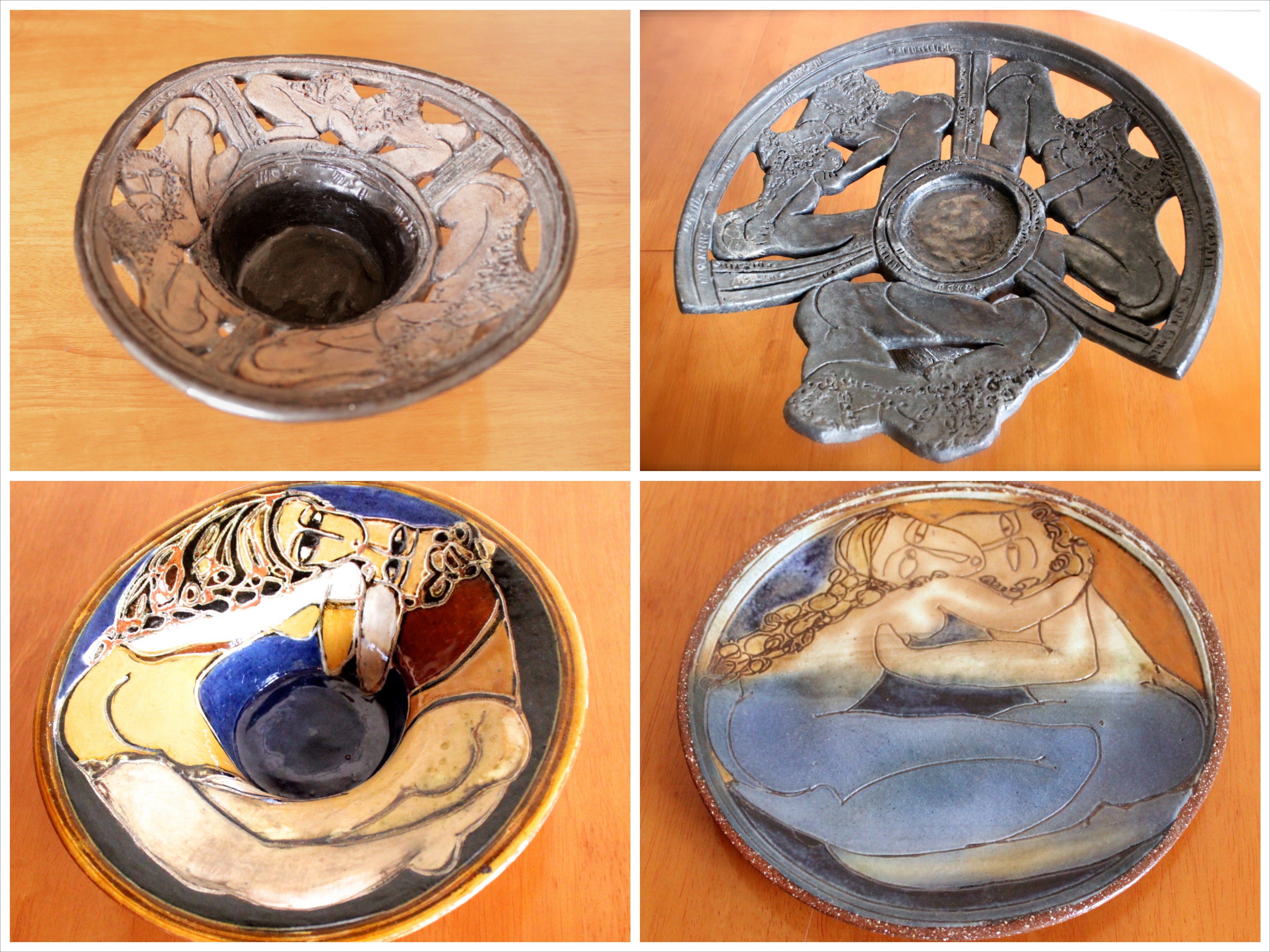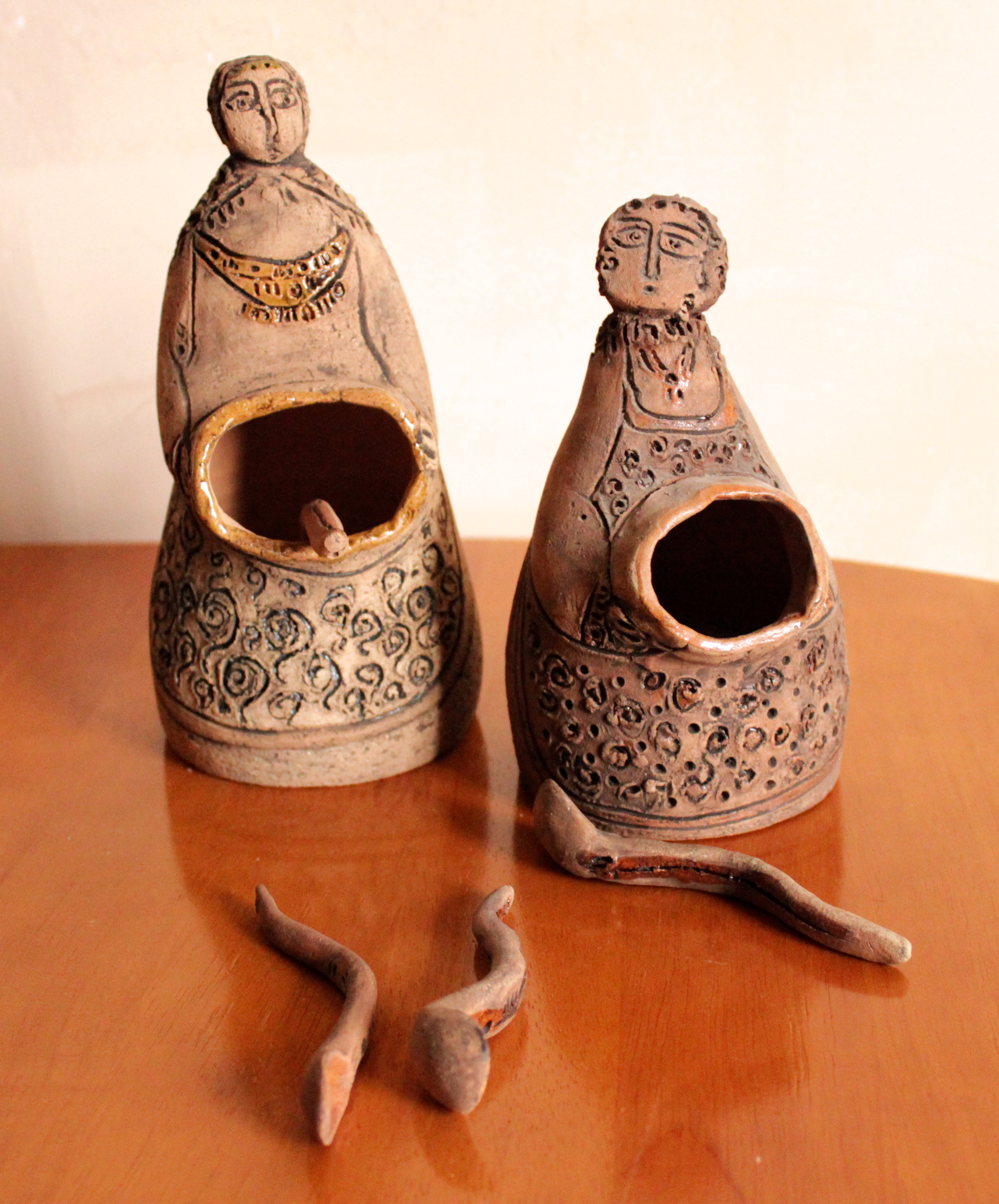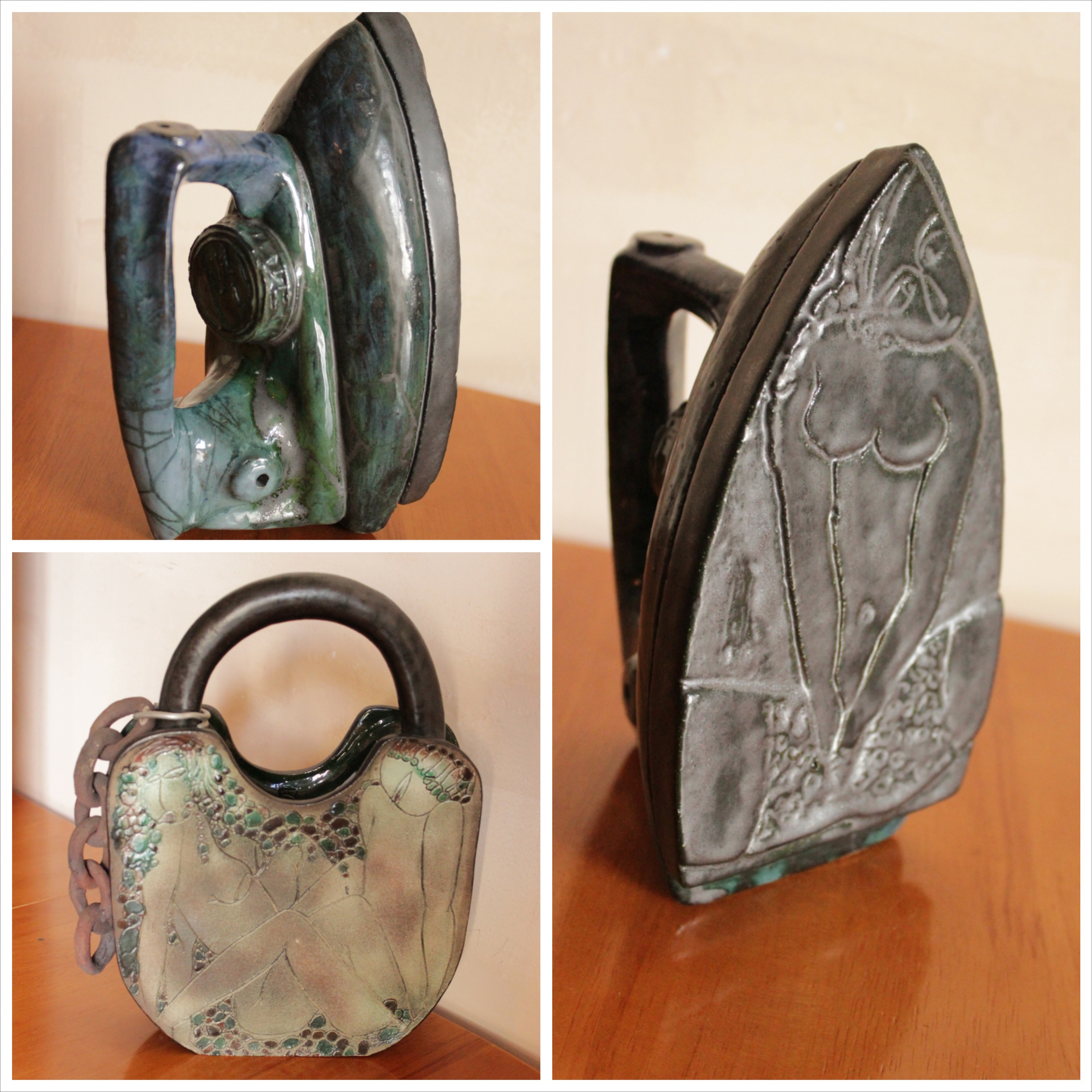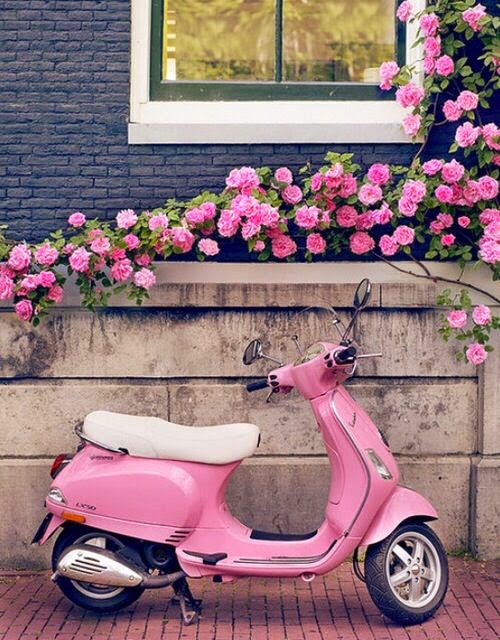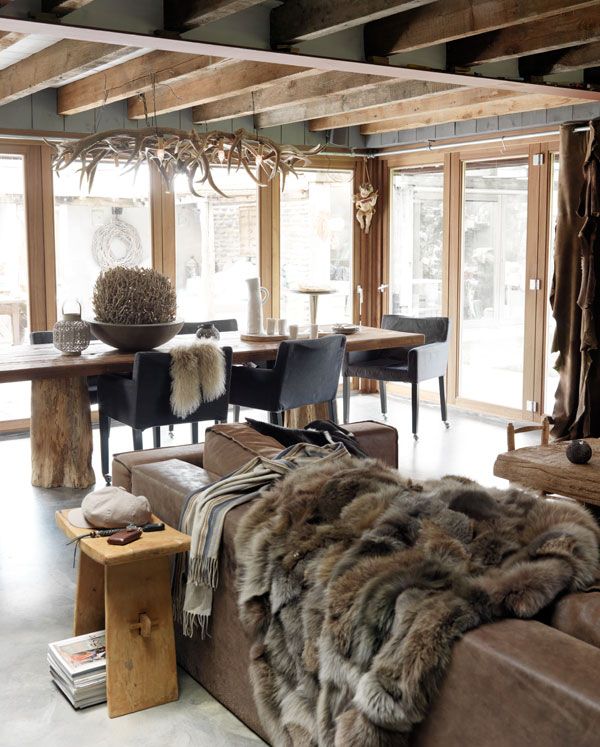The Art Of Ceramics Or The Difference Between Craft And Art
One thing which never stops to amaze me here in Armenia is an incredible hospitality of local people. You make an appointment for a coffee to discuss business, you need to be ready to spend the whole afternoon talking about the meaning of life. Actually attitude of locals towards time at some point astonished me a lot but slowly I get used to it too. We even make jokes with my husband saying, for example “we’ll meet in half an hour, Armenian time” which basically means in one hour.
The reason I wanted to meet Lusine Naghdalyan and Armen Stepanian – prominent Armenian artists, is to discuss possibility to sell their unique ceramics in my shop. I ended up spending four hours over delicious Armenian coffee talking about history of Armenia, museums, exhibitions, arts and crafts.
However first things first. Lusine and Armen are husband and wife, well known among Armenian artistic society. Every work they make is the fruit of their mutual creativity, imagination and love. The last one is actually the primary inspiration and theme of their creations. I am so excited to present here their amazing works, which are now already available for sale in my shop. Every object is one of a kind and no second alike exists.
As any other mature artist, Lusine and Armen have their own unique yet so recognisable style. Mainly it can be defined by use of muted, “natural” colour palette, such as earthy or sky tones, stylised images of humans and intricate decor.
Creating ceramics is a very long and complicated process, requiring lots of patience, attention and knowledge. There are many different techniques and Lusine and Armen use them all, but their preferable is the one using clay ‘layers’. First of all they make a sheet out of clay by rolling it on a table like a dough. Then to make a square vase they cut equal pieces and join them together, for round vases they form it around plastic cylinder. Alternatively for making some objects they also use potter’s wheel. After they work on the decoration using various techniques. Then the object is left to dry in a room temperature for 5-6 days. Once it gets dry, the item is sent to the kiln. The most frustrating thing is that objects can be easily destroyed at any moment if all technological requirements are not strictly followed. For example, putting a wrong temperature in the kiln will result in the item’s deformation and fractures. However, the process is always very interesting and exciting as you never know how the object will look like after firing. This is the difference from fabric manufactured items, where all objects look exactly the same.
The art of ceramics is the only one which involves interaction with all four elements: water, fire, air and earth.
What I love about Armen’s and Lusine’s works is that there is always a story behind their works. Even from a first glance ordinary salt cellar:
The history of this object dates back to AD 301, that was the time, when Christianity was officially accepted as state religion in Armenia. This salt cellar represents Anahit – pagan goddess of fertility and beauty. At that time it was prohibited to worship her, that’s why people started to depict her as ugly pregnant woman, so nobody will guess that this little figurine is an idol of beauty. At that time salt was as precious as gold and goddess Anahit symbolically was bringing it to the houses and that’s why people continued to worship her even more.
As any other true artist Armen and Lusine don’t limit themselves within one field. For example, apart from ceramics, they make outstanding textiles, installations and various media artworks. Here is a couple of them, which are not available in my shop, but I just couldn’t not share them with you:
During our conversation there was a rather interesting debate about the difference between art and craft. Lusine as an art expert gave a very thoughtful insight. She says that craft is just a skilled work of producing many likewise objects with a commercial purpose. While the aim of artist is to make unique object reflecting his own vision of world, dreams and aspirations. We also talked about handmade decorative objects. Lusine says that “not every handmade item has an artistic value. Today there are plenty of manufactures which make handmade goods. I could also hire a dozen of workers and just tell them what to do and supervise them. As a result we will get mass market consumer goods and not unique objets d’art”.
I am really curious to hear your opinion about this topic. I already asked this question on my Twitter and GooglePlus accounts and here is a couple of answers I want to highlight:
Bonnin Ashley Antiques: “Art: A lot of this is imagination and presentation. Craft: A lot of this is skill, work and knowledge.”
Tara Sofia: “Tough Q! I think ‘art’ has more to do with creating imagery/design and craft is using those things in a creative way.”
And what do you think is the difference between art and craft? Looking forward for your comments.
Related articles
- Sneak Peek Of New Products In L’Essenziale Boutique (essenziale-hd.com)
- How To Display Ceramic Collection (essenziale-hd.com)
- Some Updates On My Boutique and 7 Tips To Run Successful Online Store (essenziale-hd.com)

